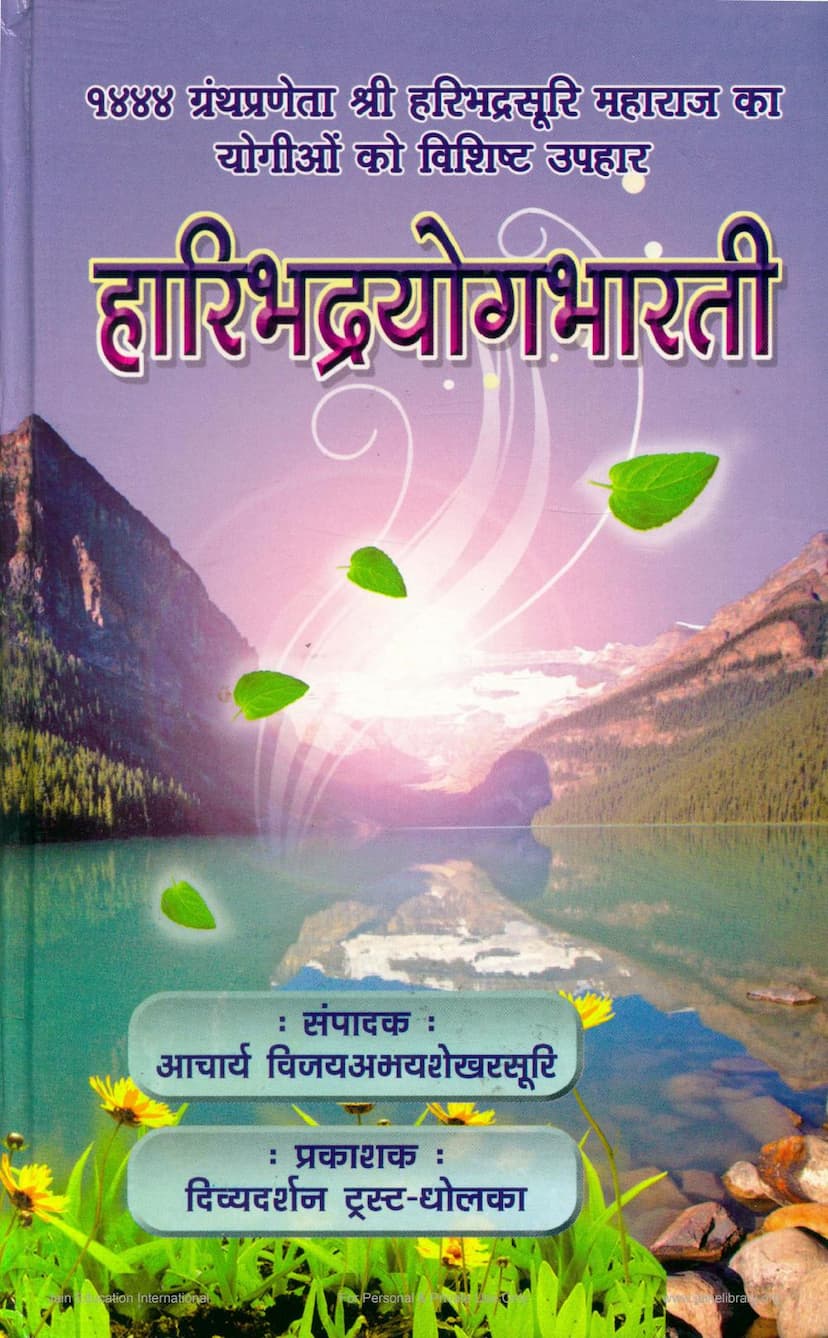Haribhadra Yogbharti
Added to library: September 1, 2025

Summary
"Haribhadra Yogbharati" is a significant Jain text compiled by Acharya Vijay Abhayashekhar Suri, published by Divya Darshan Trust. This work is a collection of four important yogic treatises by the renowned Jain scholar Acharya Haribhadra Suri. The book is presented as a gift to yogis, aiming to guide them in their spiritual practices.
The core of the book is based on Acharya Haribhadra Suri's profound exploration of yoga, which is understood in Jainism not just as physical postures but as any religious action that connects the soul to liberation (moksha). The text emphasizes that not every religious act is yoga; only those that lead to moksha qualify as such. Yoga, therefore, is a means to purify actions and achieve spiritual emancipation.
The four main texts included in "Haribhadra Yogbharati" are:
-
Yogavishika: This is a concise work of 20 verses, expounding on five types of yoga: Sthana (posture), Urna (sound), Artha (meaning), Alambana (support), and Analambana (supportless). It delves into the qualifications for practitioners, the various stages of spiritual progress, and uses examples like chaityavandana (worship of sacred images) to illustrate yogic principles. It also critiques the improper acceptance of external supports in spiritual practice. The text highlights that true dharma is characterized by inner intentions (ashayas) like pranidhana (devotion/intention), and without these, all religious acts are merely external or material (dravya-kriya) and thus insignificant in achieving liberation.
-
Yogashataka: This text, with commentary by the author himself, lays the foundation for right knowledge, right vision, and right conduct. It describes the characteristics of those who are not bound by karma (apunarbhandaka), likens a muni to a sandalwood tree, and outlines methods of teaching, treating karmic consequences, the relationship between karma and personal effort, the fourfold refuge (chatur-sharana), the nature of the three poisons (desire, aversion, delusion) and their remedies, meditative practices, guru reverence, postural meditations, knowledge of principles, the ethics of begging, the nature of spiritual powers (labdhi), and methods for understanding the state of mind at the time of death.
-
Yogadrishti Samuccaya: This work presents the path of spiritual progress through eight different "yogic views" (yoga-drishtis). It begins by classifying practices into ichha-yoga (yoga of desire), shastra-yoga (scriptural yoga), and samarthya-yoga (yoga of effort/power). It then elaborates on the eight yogic views, starting from Mitra (friend) to Para (transcendent). Each view is associated with specific yamas (restraints), dosha tyagas (renunciations of faults), and gunas (virtues), illustrated with analogies like the flame of grass fire. The text also analyzes Buddhist philosophies like momentariness and categorizes yogis into four types: kula-yogi, pravrittichakra-yogi, avanchaka-yogi, and nishpanna-yogi.
-
Yogabindu: This treatise focuses on the essence of yoga as a means to moksha. The author clarifies the concept of yoga, its nature, and its results, emphasizing that these are often debated, but they should be understood in accordance with both worldly perception and scriptural authority. The text details five paths of yoga: adhyatma (self-contemplation), bhavana (meditation/cultivation), dhyana (concentration), samata (equanimity), and vritti samkshaya (cessation of mental modifications). It discusses various classifications of yoga, its glories, methods for attaining memory of past lives, the importance of adhyatma, the characteristics of those attached to worldly existence, and the nature of purification through conduct, including respect for gurus, compassion, non-aversion to moksha, and the five types of practices like dealing with poison, antidotes, and non-action.
The compilation and editing process involved referencing ancient manuscripts from institutions like Hemchandracharya Jain Gyan Mandir in Patan and La. Da. Vidya Mandir in Ahmedabad. The publication acknowledges the inspirations and guidance received from esteemed Acharyas and trusts that this work will be instrumental in the spiritual growth of aspiring souls, enabling them to transform their religious practices into paths of liberation. The book also includes a detailed table of contents and a corrigenda section.